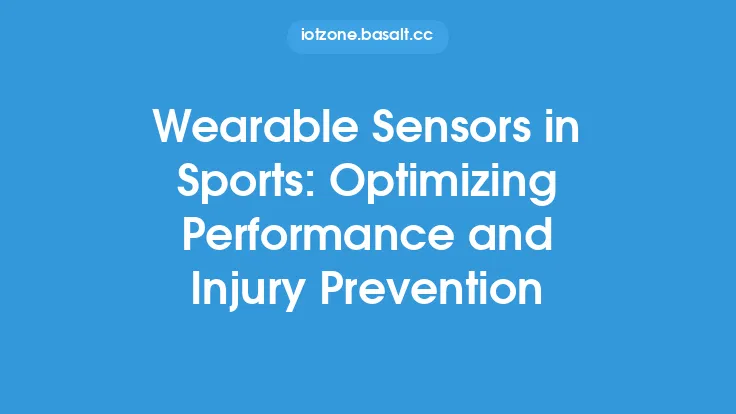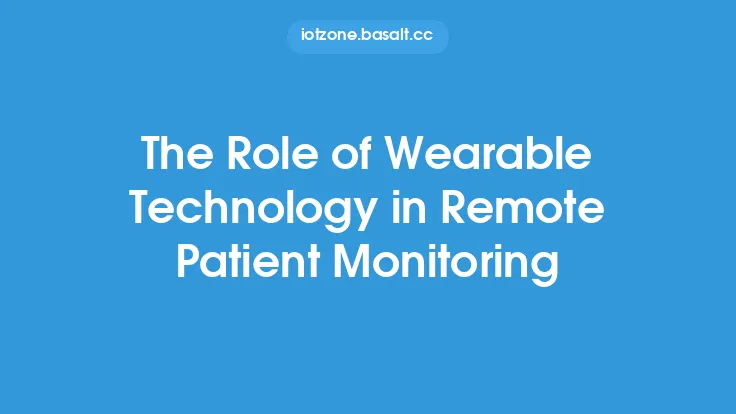The field of wearable sensors has experienced significant growth in recent years, driven by advances in technology and the increasing demand for wearable devices that can accurately track various aspects of human health and activity. One of the key challenges in wearable sensor design is achieving a balance between accuracy and comfort. Wearable sensors need to be able to accurately detect and measure various physiological and environmental parameters, while also being comfortable and unobtrusive to wear. In this article, we will explore the advances in wearable sensor design that have improved accuracy and comfort, and discuss the technical details behind these advancements.
Introduction to Wearable Sensor Design
Wearable sensor design involves the development of sensors that can be integrated into wearable devices, such as smartwatches, fitness trackers, and smart clothing. These sensors need to be small, lightweight, and low-power, while also being able to accurately detect and measure various parameters, such as heart rate, blood pressure, and movement. The design of wearable sensors involves a range of technical considerations, including the choice of sensor technology, the design of the sensor housing, and the development of algorithms for data processing and analysis.
Advances in Sensor Technologies
One of the key advances in wearable sensor design has been the development of new sensor technologies that offer improved accuracy and comfort. For example, photoplethysmography (PPG) sensors use light to measure changes in blood volume, allowing for accurate tracking of heart rate and other cardiovascular parameters. These sensors are often used in smartwatches and fitness trackers, and have been shown to be highly accurate and reliable. Another example is the development of electrodermal activity (EDA) sensors, which measure the electrical conductivity of the skin to track changes in stress and emotional state. These sensors have been shown to be highly effective in tracking changes in emotional state, and have potential applications in fields such as psychology and neuroscience.
Design Considerations for Wearable Sensors
The design of wearable sensors involves a range of technical considerations, including the choice of materials, the design of the sensor housing, and the development of algorithms for data processing and analysis. For example, wearable sensors need to be designed to be comfortable and unobtrusive to wear, while also being able to accurately detect and measure various parameters. This requires careful consideration of the sensor's size, shape, and weight, as well as the materials used in its construction. Additionally, wearable sensors need to be designed to be low-power and energy-efficient, in order to minimize the need for battery replacement or recharging.
Signal Processing and Analysis
The data generated by wearable sensors needs to be processed and analyzed in order to extract meaningful information. This involves the development of algorithms that can filter out noise and artifacts, and identify patterns and trends in the data. For example, machine learning algorithms can be used to analyze data from wearable sensors, and identify patterns and trends that are associated with specific health outcomes or behaviors. Additionally, signal processing techniques such as filtering and amplification can be used to improve the accuracy and reliability of wearable sensor data.
Integration with Other Technologies
Wearable sensors are often integrated with other technologies, such as GPS and accelerometers, in order to provide a more complete picture of human health and activity. For example, GPS can be used to track location and movement, while accelerometers can be used to track changes in movement and activity level. The integration of wearable sensors with other technologies requires careful consideration of the technical details, including the choice of communication protocols and the development of algorithms for data fusion and analysis.
Comfort and Wearability
One of the key challenges in wearable sensor design is achieving a balance between accuracy and comfort. Wearable sensors need to be comfortable and unobtrusive to wear, while also being able to accurately detect and measure various parameters. This requires careful consideration of the sensor's size, shape, and weight, as well as the materials used in its construction. For example, wearable sensors can be designed to be flexible and conformable, allowing them to be integrated into clothing or other wearable devices. Additionally, wearable sensors can be designed to be breathable and moisture-wicking, in order to improve comfort and reduce the risk of skin irritation.
Future Directions
The field of wearable sensors is rapidly evolving, with new technologies and applications emerging all the time. One of the key future directions for wearable sensors is the development of implantable and ingestible sensors, which can provide more accurate and reliable data than traditional wearable sensors. Another future direction is the integration of wearable sensors with other technologies, such as artificial intelligence and the Internet of Things (IoT). This will enable the development of more sophisticated and personalized wearable devices, which can provide real-time feedback and guidance to users.
Conclusion
In conclusion, the advances in wearable sensor design have improved accuracy and comfort, and have enabled the development of more sophisticated and personalized wearable devices. The technical details behind these advancements, including the choice of sensor technology, the design of the sensor housing, and the development of algorithms for data processing and analysis, are critical to the success of wearable sensors. As the field of wearable sensors continues to evolve, we can expect to see new technologies and applications emerging, and the development of more accurate and reliable wearable devices that can provide real-time feedback and guidance to users.





